Dynamic Load Test and Contact Force Analysis of the AERORail Structure
Abstract
:1. Introduction
2. AERORail Test Line with Modal Test
2.1. Test Line Structure
2.1.1. Superstructure of the Test Line
2.1.2. The Substructure of the Test Line
2.2. Modal Test
3. AERORail Dynamic Load Test and Analysis
3.1. Structural Fundamental Frequency
3.2. Dynamic Load Identification
3.2.1. 5 m Span Dynamic Load Identification
3.2.2. 10 m Span Dynamic Load Identification
3.2.3. 15 m Span Dynamic Load Identification
3.3. Analysis of Contact Force Law
4. Conclusions
- (1)
- Through the modal test and modal analysis results of the 30 m span and five-pole supported AERORail, the measured modal parameters and the finite element analysis modal parameters are compared. The results show that in some cases, the finite element analysis results can provide the modal parameters required for vertical vibration analysis, but in the lateral direction, the source of error between the two still needs to be deeply studied.
- (2)
- By means of parameter identification, signal truncation, resampling and filtering, contact force calculation and error correction, the contact forces of different spans AERORail at different speeds can be obtained.
- (3)
- In most cases, the statistical characteristics of the contact force, including the mean and maximum value, have no significant correlation with the velocity; in the case of small spans, the contact force will have two troughs, and in the larger spans and higher velocities, the contact force is a single-valley curve, indicating that the vibration of the structure, vehicle travel time, and wheel-axle contact are the main factors at small spans; when the speed is higher, the contact force curve will have more obvious fluctuations, but peak regularity is consistent.
- (4)
- From the overall perspective of the three spans and five speeds, the contact force time-history curve has the following characteristics: the mean value of the contact force fluctuates in the range of 1800 N~4500 N with different working conditions; the maximum value of the contact force fluctuates in the range of 6000 N~11,000 N; there is no correlation between statistical characteristics such as the mean and maximum force and speed; at the start and end times, the contact force calculated by the identification algorithm is small and the fluctuation introduced by the algorithm is mainly reflected in the beginning and end of the contact force time-history curve area.
- (5)
- Comprehensively considering the travel time, contact force and deformation law of vehicles passing through a span structure, it is determined that the maximum contact force is still directly generated by the upper moving load when the span is large, while the small span is significantly affected by the dynamic characteristics of the structure.
Author Contributions
Funding
Institutional Review Board Statement
Informed Consent Statement
Data Availability Statement
Conflicts of Interest
References
- Li, F.; Liu, D.; Han, J.; Wang, J.L. Structure form of pretension string rail structure and application prospect. In Structures and Architecture; Cruz, P.J.S., Ed.; CRC Press: Boca Raton, FL, USA, 2010; pp. 1546–1553. [Google Scholar]
- Why Hasn’t Self-Anchored Suspension Bridge Been popularized. Available online: http://www.360doc.com/content/22/0426/18/5983216_1028428704.shtml (accessed on 26 April 2022).
- The Arch Bridge Can Also Bend Downward. Available online: https://www.163.com/dy/article/DREID4S40516M7S1.html (accessed on 11 September 2018).
- Li, F.Y.; Wu, P.; Lu, D. Experimental study on the cable rigidness and static behaviors of AERORail structure. Steel Compos. Struct. 2012, 12, 427–444. [Google Scholar] [CrossRef]
- Lee, S.; Seo, M.; Baek, K.Y.; Jeong, J.; Kim, S.M.; Lee, J. Experimental study of two-way beam string structures. Eng. Struct. 2019, 191, 563–574. [Google Scholar] [CrossRef]
- Ji, Y.C.; Kim, Y.J. State-of-the-art review of bridges under rail transit loading. Proc. Inst. Civ. Eng.-Struct. Build. 2019, 172, 451–466. [Google Scholar] [CrossRef]
- Zhao, X.; Yan, S.; Xu, Z.; Wu, A. Research and Application of Beam String Structures. Struct. Eng. Int. 2015, 25, 26–33. [Google Scholar] [CrossRef]
- Guangwei, Z.; Changzhao, Q.; Changping, C. Research on the Approximate Calculation Method of the Fundamental Frequency and Its Characteristics on a Tensioned String Bridge. Processes 2022, 10, 126. [Google Scholar]
- Hartweg, S.; Heckmann, A. Moving loads on flexible structures presented in the floating frame of reference formulation. Multibody Syst. Dyn. 2016, 37, 195–210. [Google Scholar] [CrossRef]
- Lee, K. Numerical analysis for dynamic contact between high-speed wheel and elastic beam with Coulomb friction. Int. J. Numer. Methods Eng. 2009, 78, 883–900. [Google Scholar] [CrossRef]
- Lee, K. A numerical method for dynamic analysis of vehicles moving on flexible structures having gaps. Int. J. Numer. Methods Eng. 1997, 40, 511–531. [Google Scholar] [CrossRef]
- Zhao, X.W.; van der Heijden, G.H.M. Dynamics and stability of slender structures carrying a moving load or mass. Procedia Eng. 2017, 199, 2609–2614. [Google Scholar] [CrossRef]
- Xiao, X.; Chen, Y.; Shen, W.; Zhu, H. Vibration control of stress ribbon bridges subjected to moving vehicles. Struct. Control Health Monit. 2021, 28, e2835. [Google Scholar] [CrossRef]
- Fukada, S. Serviceability of stress ribbon bridges with external tendons. Proc. Inst. Civ. Eng.-Bridge Eng. 2015, 168, 123–138. [Google Scholar] [CrossRef]
- Zhang, Y.; Pu, W.; Zhang, Q.; Liu, K.; Dong, H. Effect of Ground Motion Orientation on Seismic Responses of an Asymmetric Stress Ribbon Pedestrian Bridge. Adv. Civ. Eng. 2022, 2022, 1278314. [Google Scholar] [CrossRef]
- Li, F.; Wu, P.; Liu, D. Application of Virtual Prototyping to Simulation of Vehicle-rail Coupling of AERORail Structure. J. Tongji Univ. (Nat. Sci.) 2012, 40, 1287–1293. [Google Scholar]
- Peng, S. Study on static characteristics of a new pretensioned pretensioned string AERORrail structure. In Department of Bridge Engineering; Tongji University: Shanghai, China, 2017. [Google Scholar]
- Yu, C. Study on dynamic characteristics of a new pretensioned string AERORrail structure. In Department of Bridge Engineering; Tongji University: Shanghai, China, 2018. [Google Scholar]
- Li, K.R. Inferred cable force of the beam-string structure based on finite element simulation and simplified method of cable force test using frequency method. Sichuan Build. Sci. 2021, 47, 35–39. [Google Scholar]
- Yan, Z.; Teng, S.; Luo, W.; Bassir, D.; Chen, G. Bridge Modal Parameter Identification from UAV Measurement Based on Empirical Mode Decomposition and Fourier Transform. Appl. Sci. 2022, 12, 8689. [Google Scholar] [CrossRef]
- Lorenzoni, F.; De Conto, N.; da Porto, F.; Modena, C. Ambient and free-vibration tests to improve the quantification and estimation of modal parameters in existing bridges. J. Civ. Struct. Health Monit. 2019, 9, 617–637. [Google Scholar] [CrossRef]
- Zulkifli, E.; Widarda, D.R. Modal parameters identification of light rail bridges. IOP Conf. Ser. Mater. Sci. Eng. 2019, 669, 012027. [Google Scholar] [CrossRef]
- Law, S.S.; Chan, T.H.; Zeng, Q.H. Moving force identification: A time domain method. J. Sound Vib. 1997, 201, 1–22. [Google Scholar] [CrossRef]
- Xue, Z.; Cheng, X.; Li, L.; Zhang, X.; Li, D. Study on the separation overlapping spectrum by “dmey” wavelet transformation and genetic algorithms. J. Chongqing Univ. Arts Sci. 2014, 33, 104–106+111. [Google Scholar]
- Grobbelaar, M.; Phadikar, S.; Ghaderpour, E.; Struck, A.F.; Sinha, N.; Ghosh, R.; Ahmed, M.Z.I. A Survey on Denoising Techniques of Electroencephalogram Signals Using Wavelet Transform. Signals 2022, 3, 577–586. [Google Scholar] [CrossRef]
- Yang, J.; Hou, P.; Yang, C.; Zhang, Y. Study on the Method of Moving Load Identification Based on Strain Influence Line. Appl. Sci. 2021, 11, 853. [Google Scholar] [CrossRef]
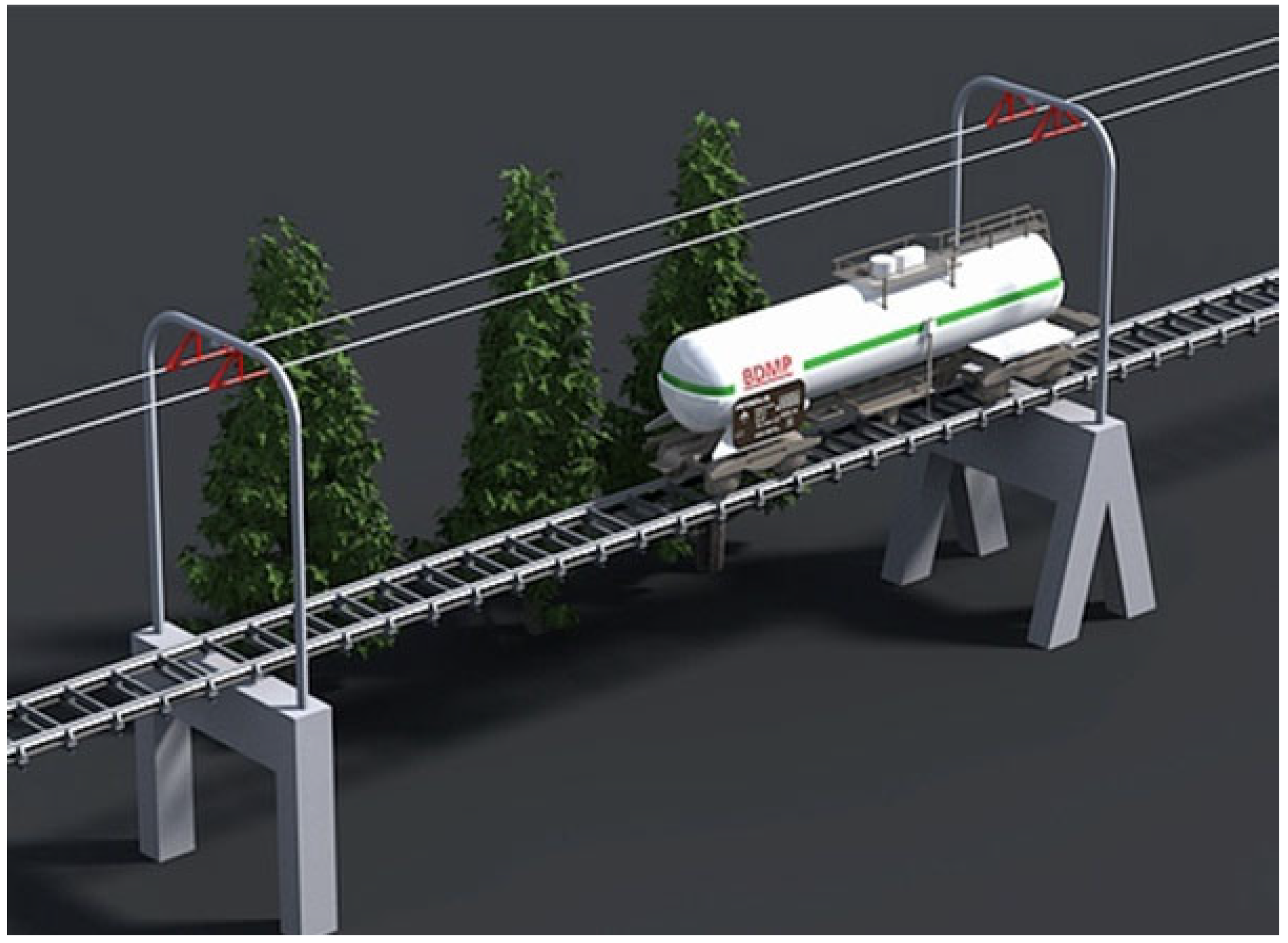


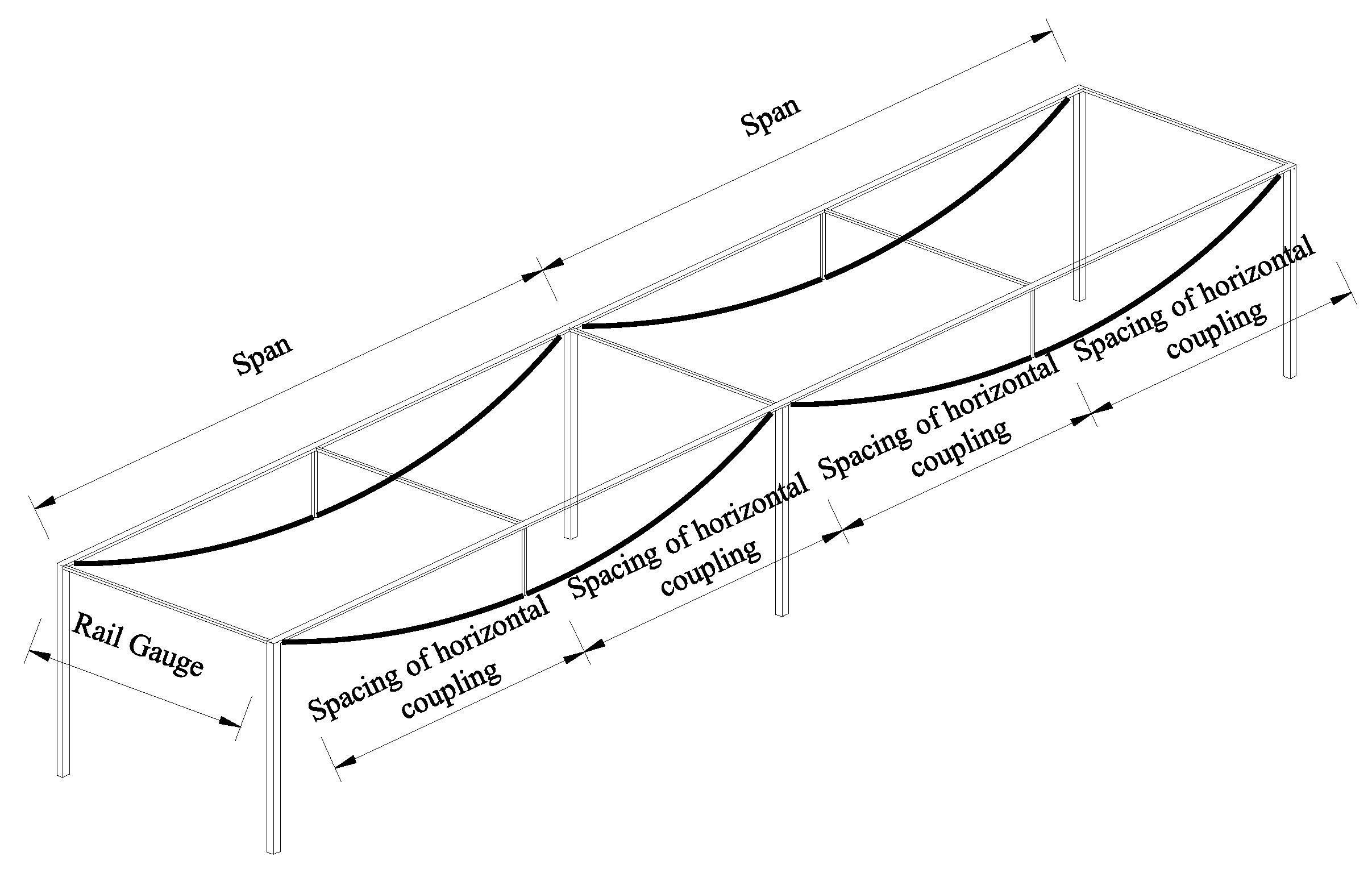

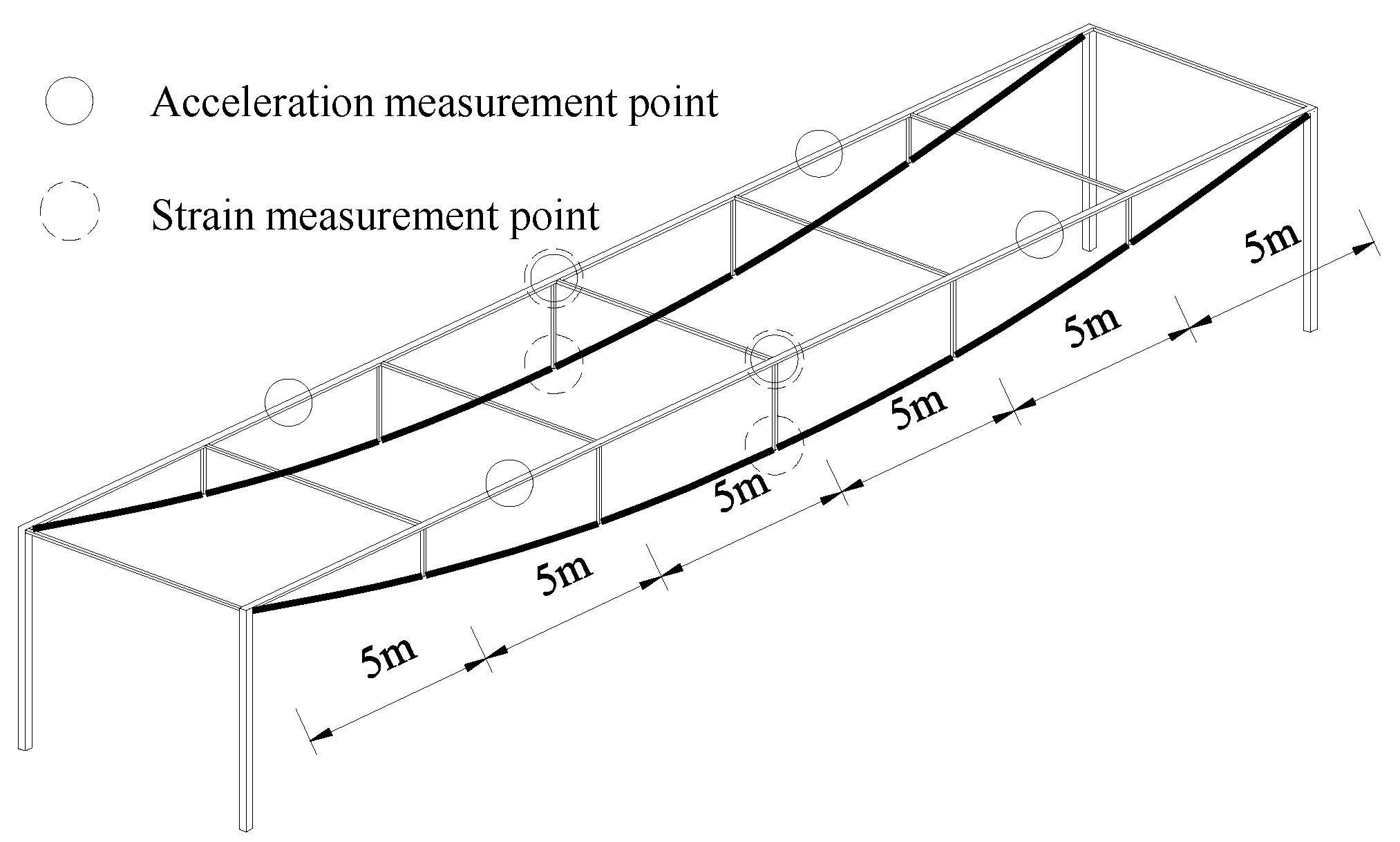
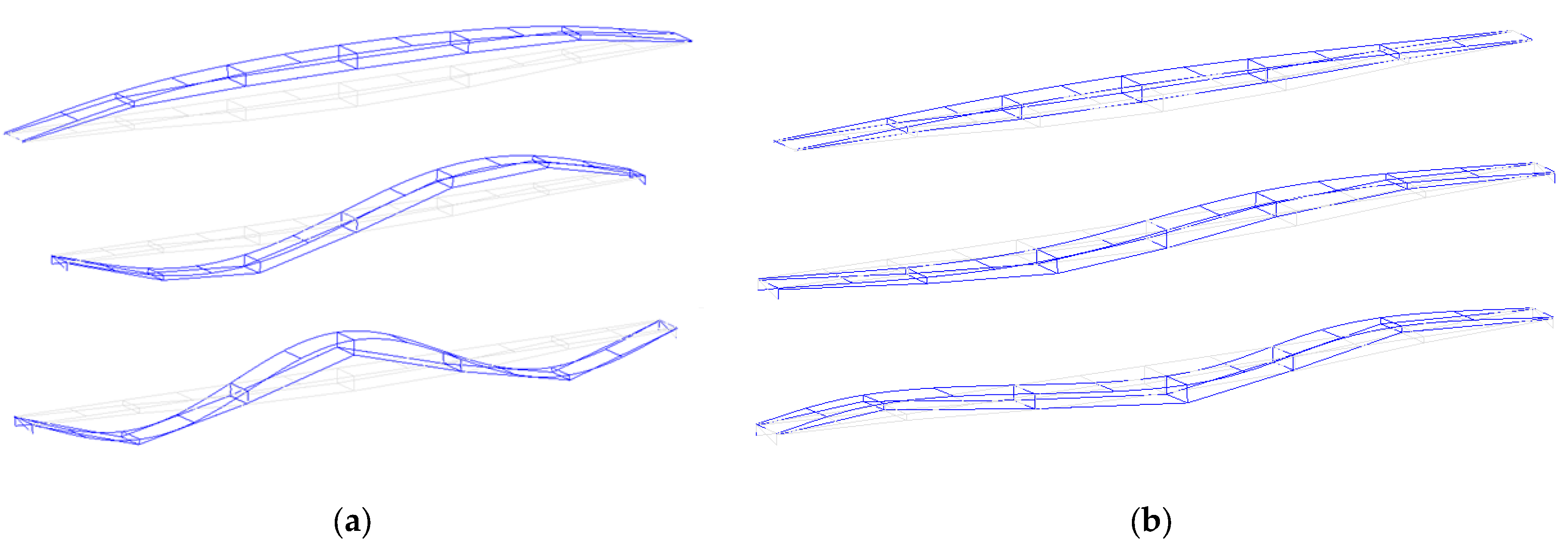
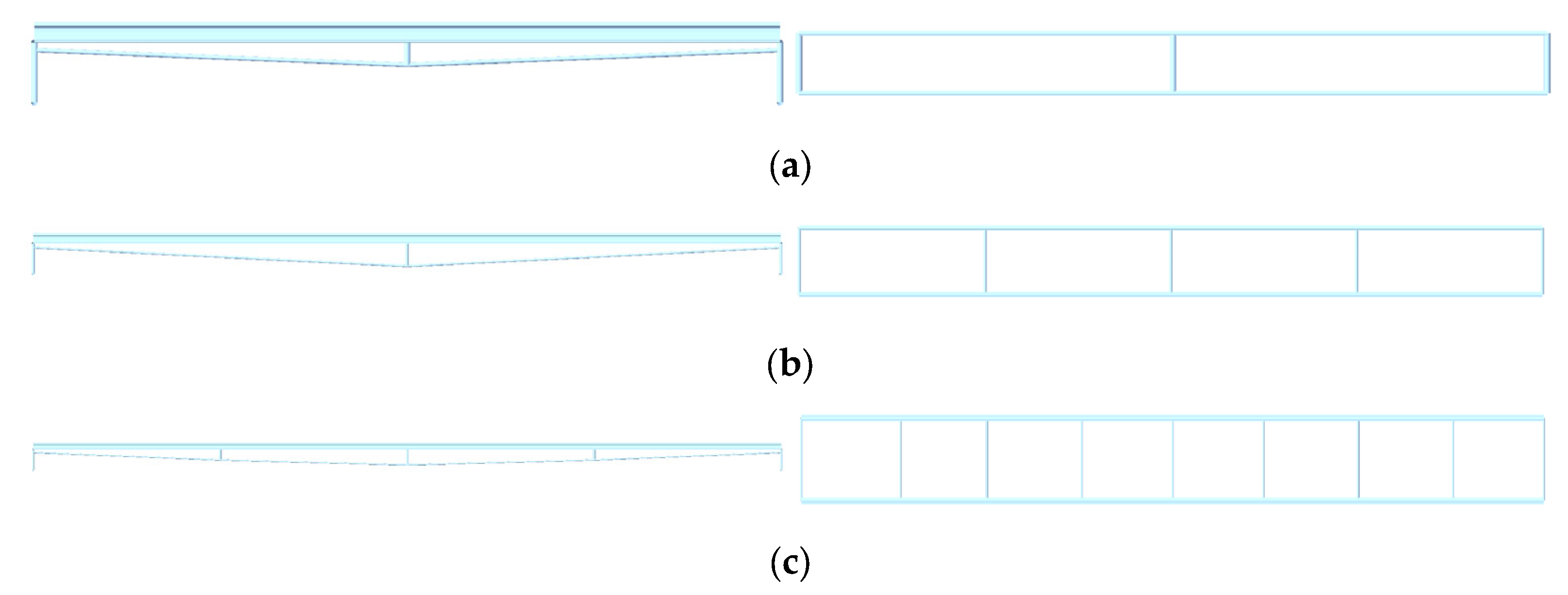


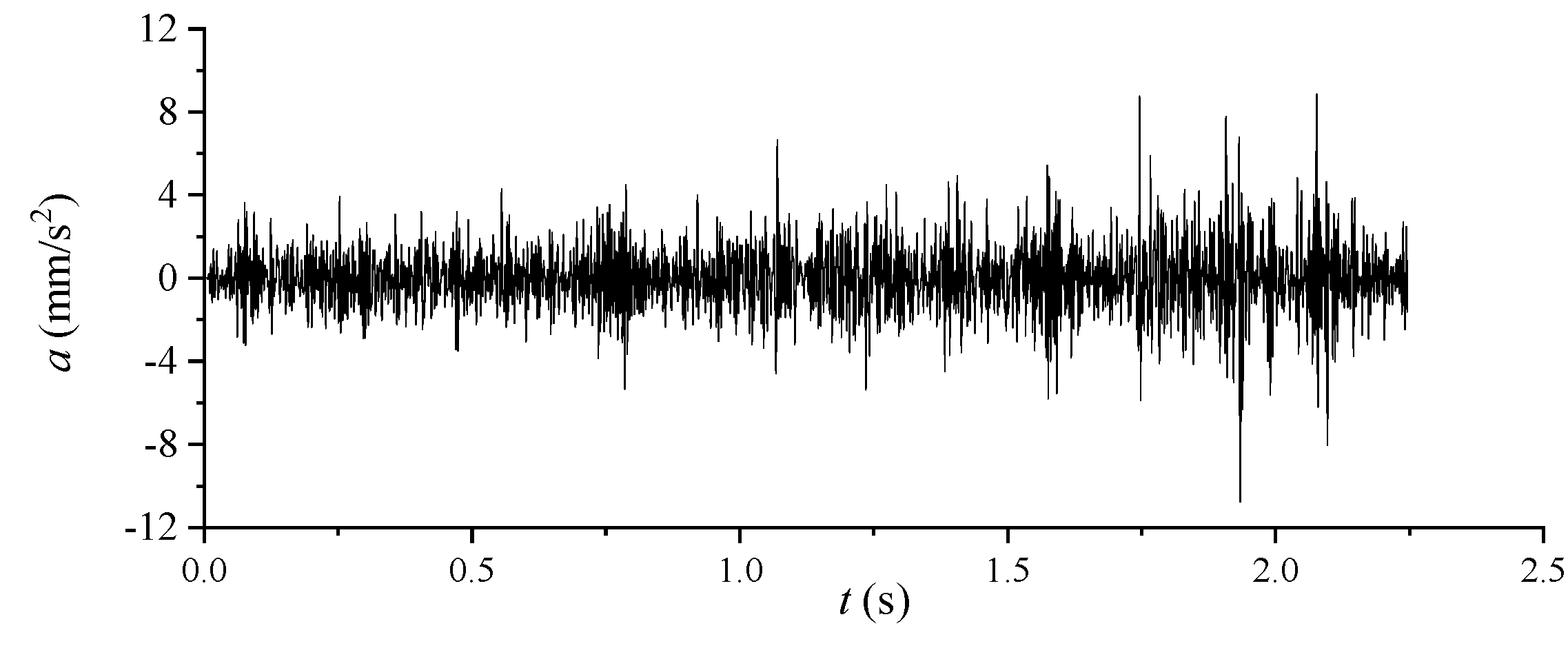
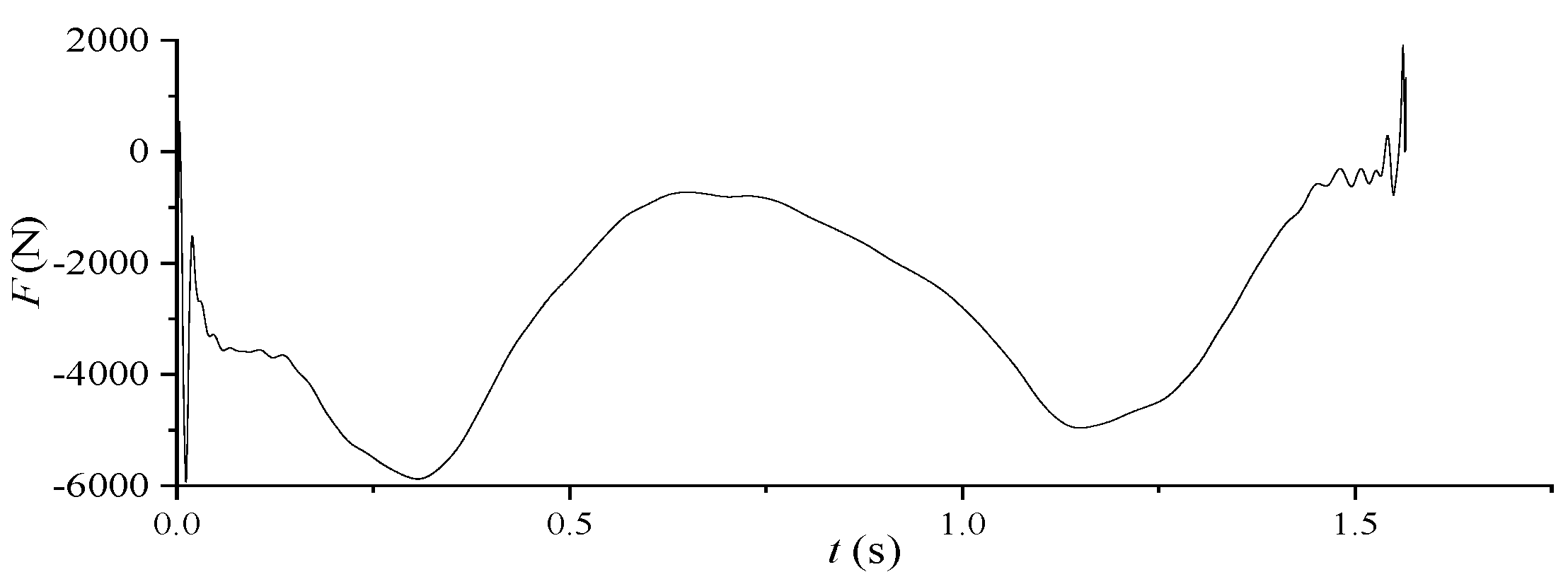


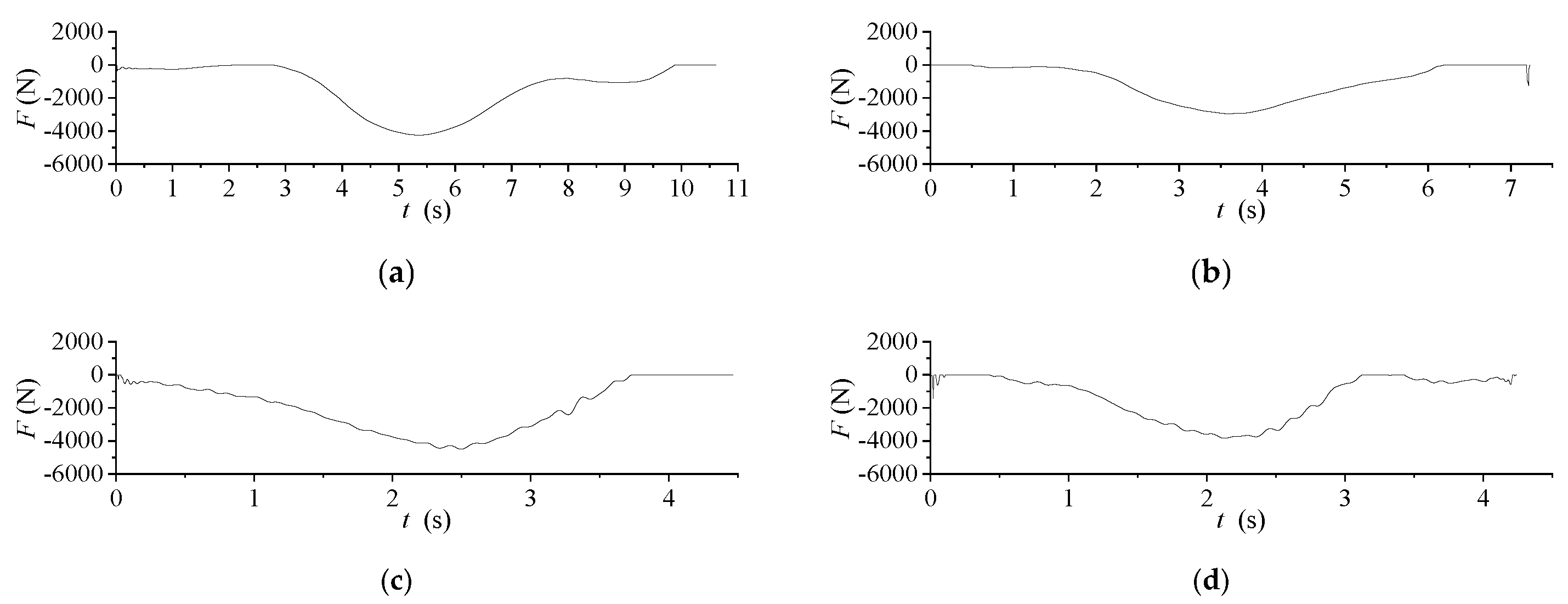

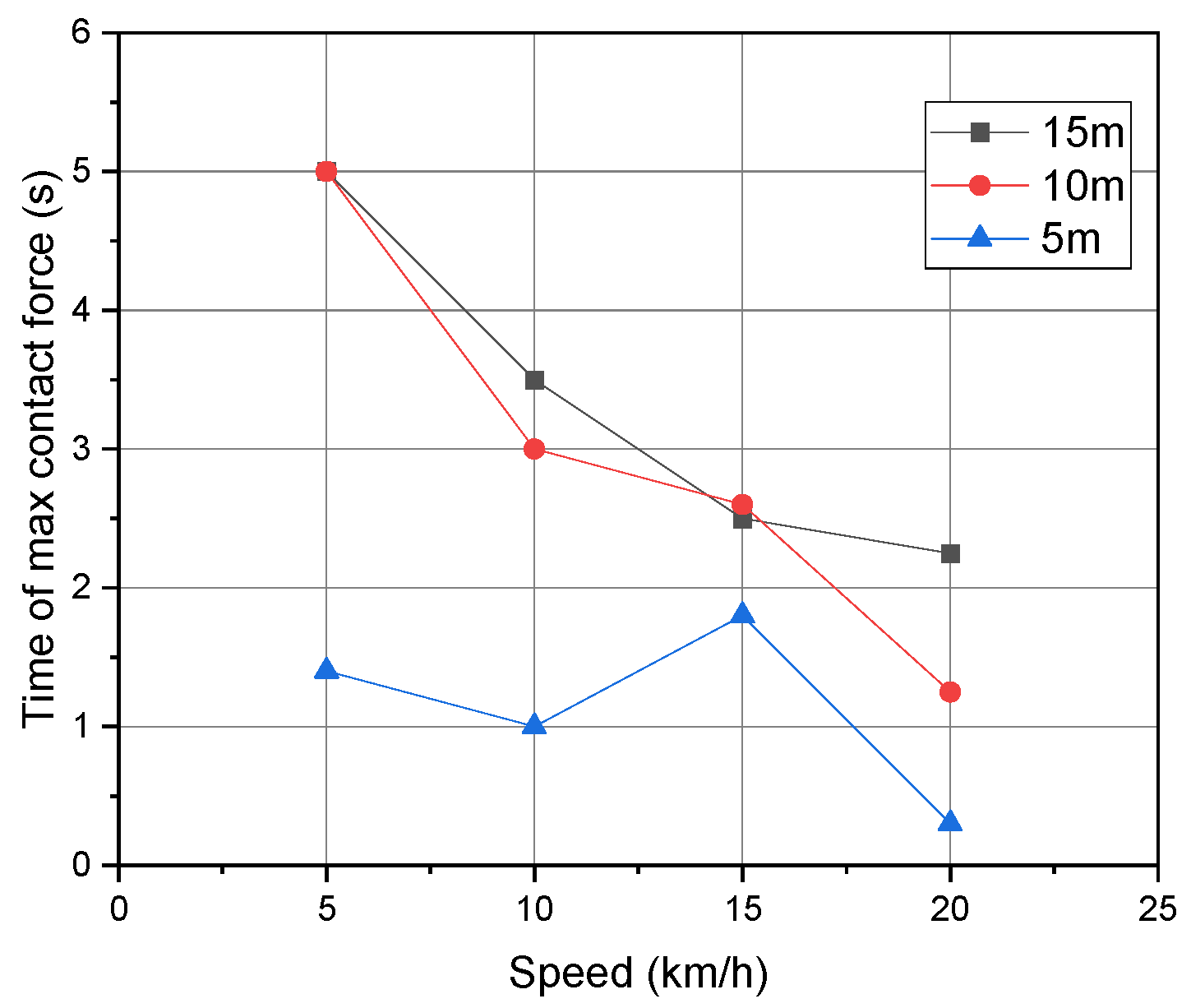
| Span Number | 1~12 | 13~22 | 23 | 24~25 | |
|---|---|---|---|---|---|
| span(m) | 5 | 10 | 15 | 5 | |
| pole position | mid-span | mid-span | mid-span | quarter point | mid-span |
| strut design length (mm) | 100 | 200 | 340 | 200 | 100 |
| actual length of strut (mm) | 100 | 206~210 | 340~341 | 208~210 | 100 |
| First Order | Second Order | Third Order | |||||
|---|---|---|---|---|---|---|---|
| Vertical | Horizontal | Vertical | Horizontal | Vertical | Horizontal | ||
| frequency (Hz) | north | 1.57 | 2.51/4.7 | - | 6.27 | 4.86 | 7.99 |
| damping ratio (%) | 3.72 | 2.12 | - | - | 2.62 | 6.31 | |
| frequency (Hz) | south | 1.57 | 0.78 | - | 6.27 | 4.86 | 2.51/4.7 |
| damping ratio (%) | 3.72 | - | - | - | - | - | |
| Span (m) | Vertical Vibration Frequency (Hz) | Transverse Vibration Frequency (Hz) | ||||
|---|---|---|---|---|---|---|
| First Order | Second Order | Third Order | First Order | Second Order | Third Order | |
| 5 | 16.40 | 65.57 | 117.80 | 13.95 | 28.64 | 69.57 |
| 10 | 4.18 | 15.90 | 30.40 | 3.77 | 10.68 | 17.81 |
| 15 | 2.1 | 8.18 | 12.57 | 1.70 | 27.62 | 48.07 |
| 5 km/h | 10 km/h | 15 km/h | 20 km/h | 25 km/h | Mean | Maximum Value | |
|---|---|---|---|---|---|---|---|
| mean force (N) | 4137.1 | 706.0 | 3470.1 | 2838.8 | 2241.0 | 2678.6 | 4137.1 |
| max force (N) | 8816.7 | 1610.5 | 7077.2 | 5876.3 | 7736.4 | 6223.4 | 8816.7 |
| 5 km/h | 10 km/h | 15 km/h | 20 km/h | 25 km/h | Mean | Maximum Value | |
|---|---|---|---|---|---|---|---|
| mean force (N) | 4520.0 | 6601.6 | 3809.1 | 3075.9 | 4586.8 | 4518.7 | 6601.6 |
| max force (N) | 9421.9 | 1,0573.0 | 8319.6 | 8043.7 | 1,1760.7 | 9623.8 | 1,1760.7 |
| 5 km/h | 10 km/h | 15 km/h | 20 km/h | Mean | Maximum Value | |
|---|---|---|---|---|---|---|
| mean force (N) | 1354.3 | 1052.1 | 1901.9 | 1329.5 | 1409.4 | 1901.9 |
| max force (N) | 4246.2 | 2948.7 | 4501.0 | 3845.1 | 3885.3 | 4501.0 |
Disclaimer/Publisher’s Note: The statements, opinions and data contained in all publications are solely those of the individual author(s) and contributor(s) and not of MDPI and/or the editor(s). MDPI and/or the editor(s) disclaim responsibility for any injury to people or property resulting from any ideas, methods, instructions or products referred to in the content. |
© 2023 by the authors. Licensee MDPI, Basel, Switzerland. This article is an open access article distributed under the terms and conditions of the Creative Commons Attribution (CC BY) license (https://creativecommons.org/licenses/by/4.0/).
Share and Cite
Li, F.; Guo, Z.; Cui, Y.; Wu, P. Dynamic Load Test and Contact Force Analysis of the AERORail Structure. Appl. Sci. 2023, 13, 2011. https://doi.org/10.3390/app13032011
Li F, Guo Z, Cui Y, Wu P. Dynamic Load Test and Contact Force Analysis of the AERORail Structure. Applied Sciences. 2023; 13(3):2011. https://doi.org/10.3390/app13032011
Chicago/Turabian StyleLi, Fangyuan, Zhenwei Guo, Yunxuan Cui, and Peifeng Wu. 2023. "Dynamic Load Test and Contact Force Analysis of the AERORail Structure" Applied Sciences 13, no. 3: 2011. https://doi.org/10.3390/app13032011
APA StyleLi, F., Guo, Z., Cui, Y., & Wu, P. (2023). Dynamic Load Test and Contact Force Analysis of the AERORail Structure. Applied Sciences, 13(3), 2011. https://doi.org/10.3390/app13032011







